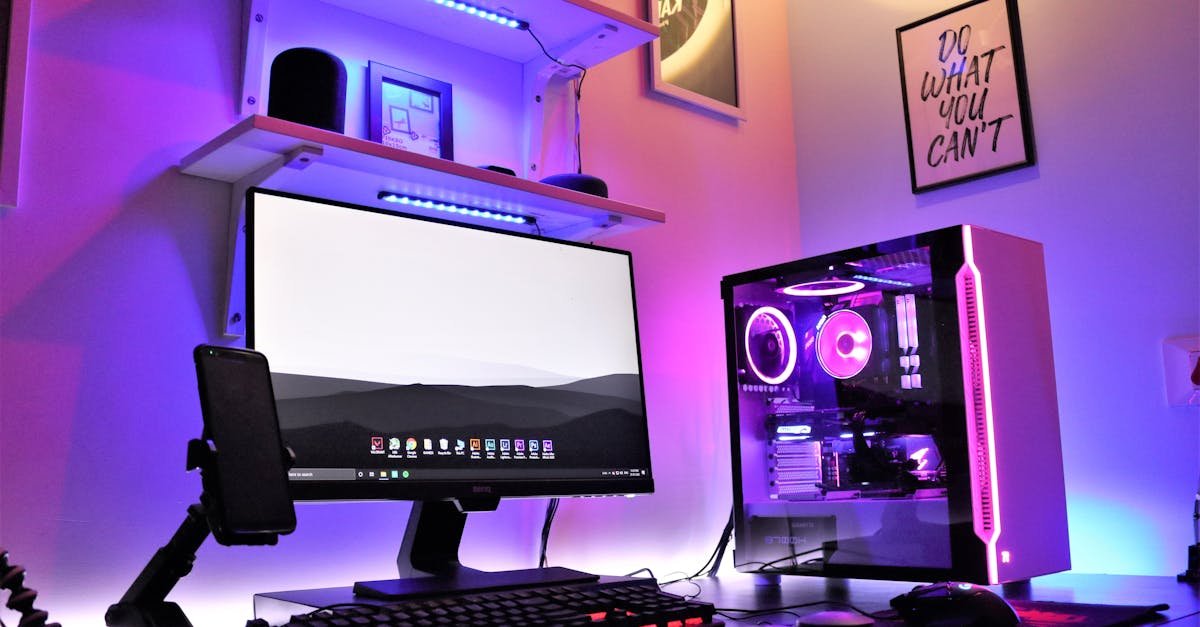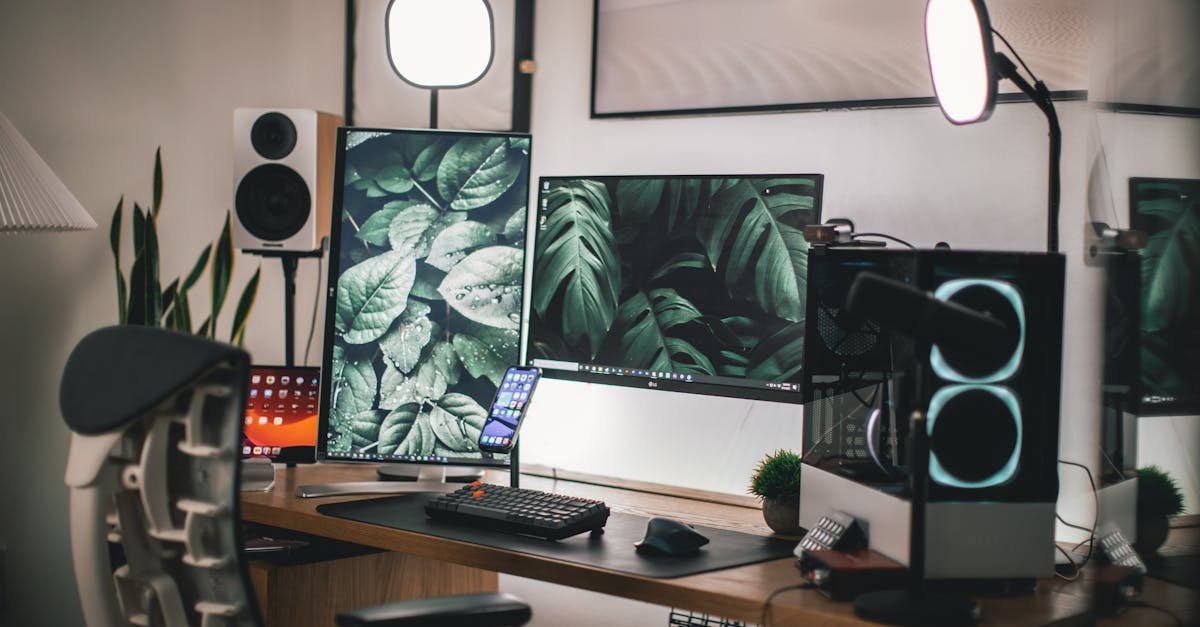Understanding Mouse Sensitivity and Its Impact

Let’s dive into the world of mouse sensitivity. What exactly is it? Well, in simple terms, mouse sensitivity determines how much your cursor moves on the screen relative to your physical mouse movements. Think of it like this: a high sensitivity setting means a small movement of your mouse translates to a large movement of the cursor, and vice versa. This is often measured in counts per inch (CPI) or dots per inch (DPI), which refers to the number of steps the mouse reports for every inch it moves. The higher the DPI, the more sensitive your mouse is. According to Wikipedia, mouse sensitivity is a crucial factor in how we interact with our computers, especially in gaming.
Why is this so important? Because the right mouse sensitivity can make or break your gaming experience. Imagine trying to snipe an enemy in a first-person shooter (FPS) game, but your crosshair jumps all over the place. Frustrating, right? Or, picture trying to make precise selections in a design program, but the cursor is too sluggish. The correct sensitivity allows for precise aiming, smooth navigation, and quicker reaction times. It’s all about finding that sweet spot where you feel in complete control. I remember when I first started playing competitive games; I struggled with this a lot. I’d constantly overshoot my targets, and it felt like I was fighting the game more than playing it. It took me a while to realize that the problem wasn’t my skill; it was my mouse settings.
The “right” sensitivity is subjective. What works for one person might not work for another. It depends on a variety of factors, including your hand-eye coordination, the size of your monitor, the type of games you play, and even your personal preferences. Some gamers prefer a lower sensitivity for enhanced precision, while others opt for higher sensitivity for quicker reflexes. It’s all about finding the balance that feels most comfortable and natural to you. I’ve always preferred a slightly lower sensitivity because I like the feeling of control it gives me. But I know friends who swear by high sensitivity, and they’re incredibly accurate. It’s a personal journey, really.
Step-by-Step Guide to Adjusting Mouse Sensitivity in Windows
Let’s get down to the nitty-gritty: how do you actually adjust your mouse sensitivity in Windows? It’s a pretty straightforward process, but let’s break it down step-by-step. This is the first thing I do whenever I get a new mouse or reinstall Windows. It’s like setting up your workspace; you want everything to feel just right.
- Accessing Mouse Settings: First, you need to get to your mouse settings. There are a couple of ways to do this. The easiest is to type “mouse settings” in the Windows search bar (the little magnifying glass icon in the bottom left corner of your screen) and select “Mouse settings” from the results. Alternatively, you can go through the Control Panel. Type “Control Panel” in the search bar and open it. Then, click on “Hardware and Sound,” and finally, click on “Mouse” under the “Devices and Printers” section.
- Adjusting Cursor Speed: Once you’re in the Mouse settings window, you’ll see a slider labeled “Cursor speed” or something similar. This is your primary tool for adjusting mouse sensitivity. Moving the slider to the left decreases sensitivity (slower cursor movement), while moving it to the right increases sensitivity (faster cursor movement). Experiment with this slider until you find a setting that feels comfortable.
- Pointer Options: Click on the “Pointer Options” tab. Here, you’ll find a few more settings that can affect your mouse sensitivity. The most important one is “Enhance pointer precision.” This setting, when enabled, adds mouse acceleration. Mouse acceleration means that the faster you move your mouse, the further the cursor will travel. Some people like this, but many gamers prefer to turn it off for more consistent and predictable aiming. Uncheck the box next to “Enhance pointer precision” to disable mouse acceleration.
- Applying Changes: Once you’ve made your adjustments, click “Apply” and then “OK” to save your changes. Test your mouse movement to see if the new settings feel better. You might need to go back and tweak the settings a few times to get them just right.
Common Mistakes and How to Avoid Them: One common mistake is making drastic changes all at once. It’s better to make small adjustments and test the results. Another mistake is not testing your settings in the games or applications you use most. What feels good on the desktop might not translate well in a game. Also, don’t forget to consider your mouse’s DPI settings. If your mouse has DPI buttons, you can change the sensitivity on the fly. Make sure you’re not accidentally hitting those buttons while playing. I once spent an hour trying to figure out why my aim was so off, only to realize I’d bumped the DPI button on my mouse.
Additional Tips for Best Results: Consider your mousepad. A smooth, consistent surface can improve your mouse tracking. Also, make sure your mouse drivers are up to date. You can usually download the latest drivers from your mouse manufacturer’s website. If you’re a gamer, you might want to create different sensitivity profiles for different games. Many gaming mice come with software that allows you to do this. Finally, don’t be afraid to experiment. There’s no “one size fits all” solution. It’s all about finding what works best for you.
Benefits and Expected Outcomes: The benefits of adjusting your mouse sensitivity are numerous. You’ll experience improved accuracy, smoother cursor movement, and faster reaction times. You’ll also feel more in control of your mouse, which can lead to a more enjoyable and productive experience, whether you’re gaming, designing, or just browsing the web. The expected outcome is a mouse that feels natural and responsive, allowing you to perform tasks more efficiently and effectively.
Fine-Tuning Your Mouse Sensitivity for Gaming

Now, let’s focus on optimizing your mouse sensitivity specifically for gaming. This is where things get a bit more nuanced. As we discussed earlier, different game genres may benefit from varying mouse sensitivity settings. For example, in games where aiming precision is crucial, like FPS games, a lower sensitivity is often preferred. This allows for more controlled and accurate movements. In fast-paced games, like some action or strategy games, a higher sensitivity might be more helpful for swift camera movements and quick reactions. I’ve found that I need to adjust my sensitivity for almost every game I play. It’s a constant process of tweaking and refining.
Finding the ideal mouse sensitivity for gaming often involves trial and error. There’s no magic number. Many gamers use the “360-degree turn” method as a starting point. This involves adjusting your sensitivity until you can do a complete 360-degree turn in the game with a specific physical mouse movement. For example, you might aim for a 360-degree turn with a 12-inch swipe of your mousepad. This can give you a good baseline to work from. I remember when I first heard about this; it was a game-changer. It gave me a concrete way to measure and adjust my sensitivity.
Here’s a more detailed breakdown of how to fine-tune your mouse sensitivity for gaming:
- Start with a Baseline: As mentioned, the 360-degree turn method is a good starting point. Choose a game and find a relatively open area where you can easily test your turning speed. Adjust your in-game sensitivity until you can do a 360-degree turn with a comfortable mouse movement.
- Adjust DPI (If Applicable): If your mouse has DPI buttons, use them to adjust your mouse’s hardware sensitivity. DPI settings affect how many pixels the cursor moves per inch of physical mouse movement. Experiment with different DPI settings to find the one that complements your in-game sensitivity.
- Test in Different Scenarios: Once you have a baseline, test your sensitivity in various in-game scenarios. Try aiming at distant targets, tracking moving targets, and making quick flicks. If you’re consistently overshooting or undershooting, adjust your sensitivity accordingly.
- Make Small Incremental Changes: Don’t make huge jumps in sensitivity. Small, incremental changes are easier to manage and allow you to better understand the impact of each adjustment.
- Consider Mouse Acceleration: As mentioned earlier, mouse acceleration can affect your aiming. Experiment with turning it on and off to see which feels better for you. Many gamers prefer to disable mouse acceleration for more consistent aiming.
- Create Profiles for Different Games: If you play multiple games, you might need different sensitivity settings for each one. Most gaming mice come with software that allows you to create and save different profiles for different games.
- Practice and Adapt: Once you’ve found a sensitivity that feels good, practice with it. Over time, you might find that your preferences change, so don’t be afraid to re-evaluate and adjust your settings as needed.
Common Mistakes and How to Avoid Them: One common mistake is trying to copy someone else’s sensitivity settings. What works for another player might not work for you. Another mistake is not being patient. Fine-tuning your sensitivity takes time and effort. Don’t get discouraged if you don’t find the perfect settings right away. Also, don’t forget to consider your mousepad. A good mousepad can make a big difference in your tracking and accuracy.
Additional Tips for Best Results: Consider your monitor’s resolution and refresh rate. These factors can affect how your mouse movements appear on the screen. Also, make sure your computer is running smoothly. Lag or low frame rates can make your mouse feel less responsive. If you’re using a wireless mouse, make sure the battery is charged and that you have a good connection. Finally, pay attention to your posture and ergonomics. A comfortable setup can help you maintain accuracy and avoid fatigue.
Benefits and Expected Outcomes: The benefits of fine-tuning your mouse sensitivity for gaming are significant. You’ll experience improved accuracy, faster reaction times, and a greater sense of control. You’ll be able to aim more precisely, track targets more effectively, and make quicker decisions. The expected outcome is a more enjoyable and successful gaming experience.
Troubleshooting Common Mouse Sensitivity Issues
Even after adjusting your mouse sensitivity, you might encounter some issues. Let’s troubleshoot some of the most common problems. One of the most frustrating issues is when your mouse sensitivity changes randomly. This can happen for a variety of reasons, including driver problems, software conflicts, or even hardware issues. Another common problem is a mouse that feels sluggish or unresponsive. This can be caused by a low polling rate, lag, or other technical issues. I’ve definitely experienced my fair share of these problems over the years. It can be incredibly frustrating when your mouse isn’t working the way you expect it to.
Here’s a step-by-step guide to troubleshooting common mouse sensitivity issues:
- Check Your Mouse Drivers: Outdated or corrupted mouse drivers can cause all sorts of problems. Go to your mouse manufacturer’s website and download the latest drivers for your mouse model. Install the drivers and restart your computer.
- Disable Mouse Acceleration: As mentioned earlier, mouse acceleration can sometimes cause erratic mouse movements. Make sure it’s disabled in your Windows settings and in any in-game settings.
- Check for Software Conflicts: Some software programs can interfere with your mouse settings. Close any unnecessary programs that might be running in the background, especially those that control your mouse or keyboard.
- Check Your DPI Settings: If your mouse has DPI buttons, make sure you’re not accidentally changing the DPI while playing. Also, make sure your DPI settings are appropriate for your in-game sensitivity.
- Test Your Mouse on Another Computer: If you’re still having problems, try testing your mouse on another computer. This will help you determine whether the problem is with your mouse or with your computer.
- Check Your USB Port: If you’re using a wired mouse, try plugging it into a different USB port. Sometimes, a faulty USB port can cause problems.
- Check Your Polling Rate: The polling rate determines how often your mouse reports its position to the computer. A higher polling rate can provide smoother and more responsive cursor movements. Check your mouse’s specifications to see what polling rates it supports. You might be able to adjust the polling rate using your mouse’s software.
- Run the Hardware and Devices Troubleshooter: Windows has a built-in troubleshooter that can help identify and fix some common hardware problems. Type “troubleshoot” in the Windows search bar and select “Troubleshoot settings.” Then, run the “Hardware and Devices” troubleshooter.
- Update Your BIOS: In some cases, outdated BIOS can cause compatibility issues with your mouse. Check your motherboard manufacturer’s website for the latest BIOS updates. Be careful when updating your BIOS, as it can be a risky process.
- Contact Technical Support: If you’ve tried all of the above steps and you’re still having problems, it might be time to contact the manufacturer of your mouse or your computer’s technical support.
Common Mistakes and How to Avoid Them: One common mistake is not restarting your computer after installing new drivers or making changes to your settings. Another mistake is assuming that the problem is with your mouse when it might be with your computer. Also, don’t be afraid to seek help from online forums or technical support. There are many resources available to help you troubleshoot mouse sensitivity issues.
Additional Tips for Best Results: Keep your mouse and mousepad clean. Dust and debris can interfere with your mouse tracking. Also, make sure your computer is free of viruses and malware. These can sometimes cause performance problems that affect your mouse. If you’re using a wireless mouse, make sure the receiver is close to your mouse and that there are no obstructions between them.
Benefits and Expected Outcomes: The benefits of troubleshooting mouse sensitivity issues are clear. You’ll experience a more responsive and accurate mouse, which will improve your gaming performance and overall computer experience. The expected outcome is a mouse that works as it should, allowing you to enjoy your games and other applications without frustration.
Understanding DPI and Polling Rate: The Hardware Side

Let’s delve into the hardware side of mouse sensitivity: DPI and polling rate. We’ve touched on DPI (dots per inch) already, but let’s explore it in more detail. DPI is a measure of how sensitive your mouse is. It tells you how many “dots” or pixels the cursor will move on the screen for every inch your mouse moves physically. A higher DPI means the cursor will move further with the same physical movement. It’s a hardware specification, meaning it’s built into your mouse. Polling rate, on the other hand, refers to how often your mouse reports its position to your computer. It’s measured in Hertz (Hz), and a higher polling rate means the mouse updates its position more frequently. This results in smoother and more responsive cursor movements. I always make sure to check these specs when I’m buying a new mouse. They can make a big difference in how the mouse feels.
Here’s a more detailed explanation of DPI and polling rate:
- DPI (Dots Per Inch): DPI is a hardware-level setting that determines how sensitive your mouse is. It’s a measure of how many pixels the cursor moves on the screen for every inch of physical mouse movement. A mouse with a higher DPI will move the cursor further with the same physical movement. Most modern gaming mice allow you to adjust the DPI using buttons on the mouse or through software. The ideal DPI setting depends on your personal preferences, the type of games you play, and your monitor resolution. Generally, lower DPI settings are preferred for precision aiming, while higher DPI settings are preferred for faster camera movements.
- Polling Rate (Hz): The polling rate determines how often your mouse reports its position to your computer. It’s measured in Hertz (Hz), which represents the number of times per second the mouse sends data to the computer. A higher polling rate means the mouse updates its position more frequently, resulting in smoother and more responsive cursor movements. Most gaming mice have a polling rate of 125Hz, 500Hz, or 1000Hz. A polling rate of 1000Hz is generally considered the best for gaming, as it provides the lowest possible latency. However, a higher polling rate can also put more strain on your CPU, so you might need to experiment to find the best setting for your system.
How to Adjust DPI: Many gaming mice have DPI buttons that allow you to cycle through different DPI settings on the fly. You can also adjust the DPI through your mouse’s software. The software usually allows you to create different DPI profiles for different games or applications. I find this incredibly useful. I can switch between a low DPI for precise aiming in FPS games and a higher DPI for general desktop use with a single button press.
How to Adjust Polling Rate: You can usually adjust the polling rate through your mouse’s software. The software will allow you to select from a range of polling rate options, such as 125Hz, 500Hz, or 1000Hz. As mentioned earlier, a polling rate of 1000Hz is generally recommended for gaming. However, you might need to experiment to find the best setting for your system.
Common Mistakes and How to Avoid Them: One common mistake is not understanding the difference between DPI and in-game sensitivity. DPI is a hardware setting, while in-game sensitivity is a software setting. You need to adjust both settings to achieve the desired mouse sensitivity. Another mistake is not experimenting with different DPI and polling rate settings. The best settings for you will depend on your personal preferences and your system’s capabilities. Also, don’t forget to consider your monitor’s resolution. Higher resolutions might benefit from higher DPI settings.
Additional Tips for Best Results: Choose a mouse with a high DPI and adjustable polling rate. This will give you more flexibility in fine-tuning your mouse sensitivity. Also, make sure your mousepad is compatible with your mouse’s sensor. Some mousepads are designed for specific types of sensors. If you’re using a wireless mouse, make sure the receiver is close to your mouse and that there are no obstructions between them. Finally, keep your mouse and mousepad clean. Dust and debris can interfere with your mouse tracking.
Benefits and Expected Outcomes: The benefits of understanding and adjusting DPI and polling rate are significant. You’ll experience a more responsive and accurate mouse, which will improve your gaming performance and overall computer experience. You’ll be able to aim more precisely, track targets more effectively, and make quicker decisions. The expected outcome is a mouse that feels natural and responsive, allowing you to enjoy your games and other applications without frustration.
Mouse Acceleration: Friend or Foe?
Let’s talk about mouse acceleration. What is it, and should you use it? Mouse acceleration is a feature that changes the speed of your cursor based on how quickly you move your mouse. When mouse acceleration is enabled, moving your mouse quickly will cause the cursor to move further than moving it slowly. This can be helpful for general desktop use, as it allows you to quickly move the cursor across the screen with a fast swipe, while still maintaining precision for smaller movements. However, for gaming, mouse acceleration is often considered a hindrance. It can make it difficult to develop muscle memory and predict where your cursor will land. I’ve always turned it off for gaming. I prefer the consistency of a 1:1 relationship between my mouse movement and the cursor movement.
Here’s a more detailed look at mouse acceleration:
- How Mouse Acceleration Works: Mouse acceleration works by multiplying your mouse’s movement by a factor that increases with the speed of your movement. This means that the faster you move your mouse, the more the cursor will move. The acceleration factor is usually adjustable, allowing you to control how much the cursor speeds up with faster movements.
- Benefits of Mouse Acceleration: For general desktop use, mouse acceleration can be beneficial. It allows you to quickly move the cursor across the screen with a fast swipe, while still maintaining precision for smaller movements. This can be helpful for tasks like browsing the web, working with documents, and using design software.
- Drawbacks of Mouse Acceleration for Gaming: For gaming, mouse acceleration is often considered a hindrance. It can make it difficult to develop muscle memory and predict where your cursor will land. This is because the cursor’s movement is not directly proportional to your mouse movement. The faster you move your mouse, the more the cursor will move, which can make it difficult to aim consistently.
- How to Disable Mouse Acceleration: You can disable mouse acceleration in your Windows settings. Go to the “Mouse settings” in the Control Panel or Settings app. Click on the “Pointer Options” tab. Uncheck the box next to “Enhance pointer precision.” This will disable mouse acceleration. You might also need to disable mouse acceleration in your game settings.
Common Mistakes and How to Avoid Them: One common mistake is not understanding how mouse acceleration works. Another mistake is not experimenting with turning mouse acceleration on and off. The best setting for you will depend on your personal preferences and the type of games you play. Also, don’t forget to disable mouse acceleration in your game settings, as well as in your Windows settings.
Additional Tips for Best Results: If you’re a gamer, I highly recommend disabling mouse acceleration. It will take some time to get used to, but it will ultimately improve your aiming consistency. If you’re not a gamer, you might find that mouse acceleration is helpful for general desktop use. Experiment with different settings to find what works best for you. Also, consider your mousepad. A smooth, consistent surface can improve your mouse tracking, especially if you’re using a low sensitivity.
Benefits and Expected Outcomes: The benefits of disabling mouse acceleration for gaming are significant. You’ll experience improved aiming consistency, faster reaction times, and a greater sense of control. You’ll be able to aim more precisely, track targets more effectively, and make quicker decisions. The expected outcome is a more enjoyable and successful gaming experience.
Using Mouse Software for Advanced Customization

Many gaming mice come with their own software that allows for advanced customization. This software provides a level of control that you can’t get from the standard Windows settings. You can adjust DPI settings, create different profiles for different games, customize button functions, and even create macros. This is where you can really fine-tune your mouse to your specific needs and preferences. I always install the software that comes with my mouse. It’s essential for getting the most out of the hardware. It’s like having a secret weapon.
Here’s a breakdown of what you can do with mouse software:
- DPI Adjustment: As we’ve discussed, DPI (dots per inch) is a measure of your mouse’s sensitivity. Mouse software allows you to adjust the DPI settings, often with a range of preset options or the ability to customize the DPI in small increments. You can also create different DPI profiles for different games or applications.
- Profile Creation: Mouse software allows you to create and save different profiles for different games or applications. Each profile can have its own DPI settings, button assignments, and macros. This is incredibly useful for switching between different games or tasks.
- Button Customization: You can reassign the functions of your mouse buttons. For example, you can assign a button to perform a specific action in a game, such as reloading your weapon or using a special ability. You can also assign buttons to perform common tasks, such as opening a program or adjusting the volume.
- Macro Creation: Macros are sequences of actions that can be performed with a single button press. You can create macros to automate repetitive tasks in games or applications. For example, you can create a macro to perform a complex combo in a fighting game or to quickly switch between weapons in an FPS game.
- Surface Calibration: Some mouse software allows you to calibrate your mouse to your mousepad. This can improve tracking accuracy and reduce cursor jitter.
- Lighting Customization: Many gaming mice have customizable LED lighting. Mouse software allows you to change the color, brightness, and effects of the lighting.
How to Use Mouse Software: The process for using mouse software varies depending on the manufacturer. However, the general steps are as follows:
- Download and Install the Software: Go to your mouse manufacturer’s website and download the software for your mouse model. Install the software on your computer.
- Open the Software: Open the mouse software. The software will usually detect your mouse automatically.
- Explore the Settings: Explore the different settings and options available in the software. Experiment with different DPI settings, button assignments, and macros.
- Create Profiles: Create different profiles for different games or applications. Customize each profile to your specific needs.
- Save Your Settings: Save your settings to your mouse. The software will usually allow you to save your settings to the mouse’s onboard memory, so they will be retained even if you switch to a different computer.
Common Mistakes and How to Avoid Them: One common mistake is not reading the software’s documentation. Another mistake is not experimenting with the different settings and options. Also, don’t forget to save your settings to your mouse. If you don’t save your settings, they will be lost when you close the software or restart your computer.
Additional Tips for Best Results: Take the time to learn the software’s features. The more you know about the software, the more you can customize your mouse to your specific needs. Experiment with different settings and profiles. Don’t be afraid to try new things. Also, keep your mouse software up to date. The manufacturer will often release updates that improve the software’s performance and add new features.
Benefits and Expected Outcomes: The benefits of using mouse software are significant. You’ll have more control over your mouse, which will improve your gaming performance and overall computer experience. You’ll be able to customize your mouse to your specific needs, create different profiles for different games, and automate repetitive tasks. The expected outcome is a mouse that feels natural and responsive, allowing you to enjoy your games and other applications without frustration.
Frequently Asked Questions (FAQ)

Let’s wrap things up with some frequently asked questions about mouse sensitivity and related issues:
- What is the best DPI for gaming? There’s no single “best” DPI. It depends on your personal preferences, the type of games you play, and your monitor resolution. Experiment to find what feels best for you. Many gamers use a DPI between 400 and 800.
- Should I use mouse acceleration? For gaming, most experts recommend disabling mouse acceleration for more consistent aiming. However, for general desktop use, it can be helpful.
- How do I adjust my mouse sensitivity in Windows? Go to “Mouse settings” in the Control Panel or Settings app. Use the “Cursor speed” slider to adjust the sensitivity.
- My mouse sensitivity changes randomly. What can I do? Check your mouse drivers, disable mouse acceleration, check for software conflicts, and test your mouse on another computer.
- What is the difference between DPI and in-game sensitivity? DPI is a hardware setting that determines how sensitive your mouse is. In-game sensitivity is a software setting that controls how the cursor moves within a specific game. You need to adjust both settings to achieve the desired mouse sensitivity.
- How do I know if my mouse is good for gaming? A good gaming mouse should have a high DPI, adjustable polling rate, and customizable buttons. It should also be comfortable to hold and have a good sensor.
- What is polling rate and why is it important? Polling rate is how often your mouse reports its position to your computer, measured in Hz. A higher polling rate (e.g., 1000Hz) means smoother and more responsive cursor movements, which is generally preferred for gaming.
- Can I use the same mouse settings on different computers? You can’t directly transfer settings between operating systems. You’ll need to adjust sensitivity separately on each computer. If your mouse has onboard memory, you can save profiles to it and use them on different computers.
